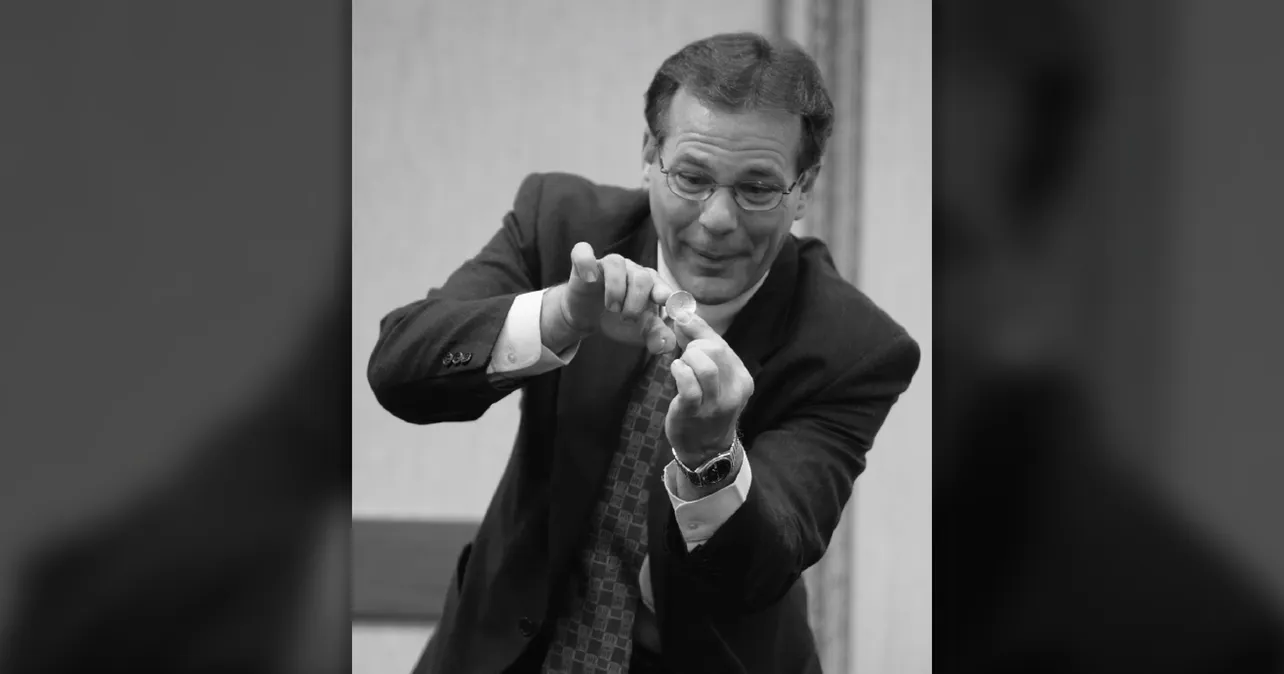In the months before his death, Tim Conover was working with his friend and colleague Glenn Farrington to prepare a book detailing his six distinct versions of John Ramsay’s Cylinder and Coins. It was to be published by Todd Karr’s Miracle Factory, and in the final stages of production. The nearly finished manuscript was graciously handed over to Tim’s family for inclusion in a planned legacy project of all his magic and mentalism, and became Volume III of our project. The following short excerpt is Tim’s attempt to catalog the most common techniques and practical applications of what he deems “classical misdirection.” It is a most useful resource for the performing magician.
—Eric Mead
Any thoughtful study of John Ramsay’s Cylinder and Coins requires an understanding of the techniques of classical misdirection. For many years, I was shocked that there wasn’t a single source that clearly and concisely defined the elements of misdirection and how they are employed to direct the spectators’ attention away from a secret move or action. In recent years, I have seen a few essays that cover the subject, but for the sake of remaining self-contained, I would like to provide my collection of rules on the subject. Credit for the most compelling essays on the subject for me must go to Slydini, John Ramsay, Tommy Wonder, John Carney, and Gary Kurtz.
For many years I kept a list of those elements that I could refer to when I needed to select some form of misdirection in a routine. Every time I was ever fooled, or missed the moment of a secret action, I tried to record the misdirection used and why it was so effective. I encourage you to take this list and continue to embellish it on your own. It has proven invaluable in constructing routines that require you to direct your spectators’ attention away from some secret action.

